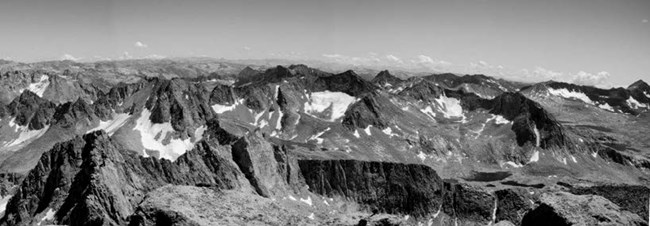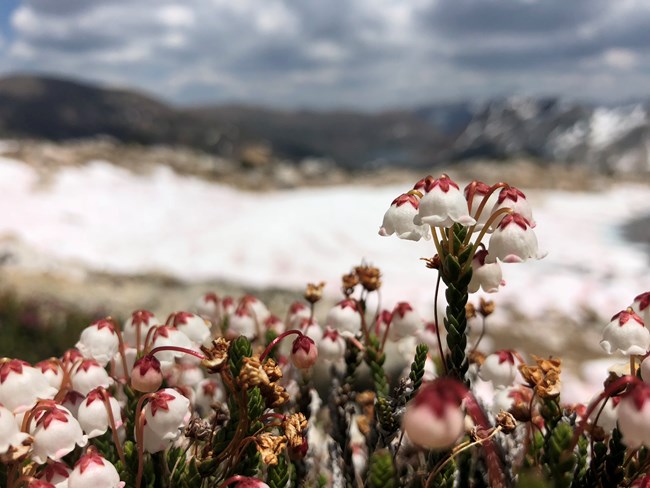|
A Century of Change in Darwin Glacier, Kings Canyon National Park 

Left image
Right image
Numerous small glaciers can be found at high elevation areas (> 3000 m or 9840 feet) of the central and southern Sierra Nevada. They change in size in response to variations in climate, so are important indicators of climate change. Cycles of Retreat and AdvanceAs Earth goes through natural cycles of warming and cooling that can last tens of thousands of years, glaciers respond to these climate changes by retreating in warm periods and advancing in cooler periods. The last glacial maximum occurred around 20,000 years ago, the Tioga Glaciation, and it filled much of Yosemite and parts of Sequoia and Kings Canyon with glaciers and ice fields. Visit this Yosemite web page to learn more about it. These massive glaciers retreated, then crept forward and retreated again for thousands of years. For a couple stretches of time, the Sierra Nevada may have been nearly entirely free of glaciers. By around 3,200 years ago, the Earth entered a natural cooling period known as neoglaciation, and small glaciers began to return to the Sierra Nevada. 
Hassan Basagic Recent ChangesBetween the early 1900s and 2004, a subset of glaciers studied in these parks and Yosemite lost an average of 55% of their surface area due to increasing spring temperatures. A glacier’s ability to act as a frozen reservoir decreases with decreasing area. A healthy glacier extends the time period of meltwater supply, contributing to the flow of streams through late summer and into fall after snow disappears. With loss of glacial area and water storage, some ponds and streams will experience lower water levels and increased temperature as they become more sensitive to summer droughts and warming. Since the time of this study, glaciers have further diminished. They are likely to vanish within 50-250 years due to warming caused by greenhouse gas emissions. 
NPS - Scott Gilb What are we losing?Glaciers are an important part of the geological history of the Sierra Nevada, and have left their mark on the landscape – glacial polish on granite domes, amphitheater-like valleys called cirques formed by glacial erosion, moraines of unconsolidated rock along glacial valleys, large boulders deposited in the middle of a meadow, and so much more. They will leave their stories behind, but we have much to learn about how wetlands, streams, plants, and animals respond to the decline of late-season water from glaciers as well as reduced meltwater from a variable and shrinking snowpack. ReferencesBasagic, H.J. and Fountain, A.G., 2011: Quantifying 20th Century Glacier Change in the Sierra Nevada, California. Arctic, Antarctic, and Alpine Research, 43(3): 317-330.Basagic, H. 2008. Quantifying Twentieth Century Glacial Change in the Sierra Nevada, California. M. S. Thesis, Portland State University, Portland Oregon. Yosemite National Park. 2020. Climate Change: Glaciers web page. Visited August 12, 2022. |
Last updated: October 4, 2023
